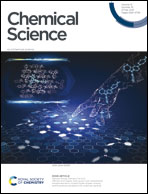A donor–acceptor complex enables the synthesis of E-olefins from alcohols, amines and carboxylic acids†
Abstract
Olefins are prevalent substrates and functionalities. The synthesis of olefins from readily available starting materials such as alcohols, amines and carboxylic acids is of great significance to address the sustainability concerns in organic synthesis. Metallaphotoredox-catalyzed defunctionalizations were reported to achieve such transformations under mild conditions. However, all these valuable strategies require a transition metal catalyst, a ligand or an expensive photocatalyst, with the challenges of controlling the region- and stereoselectivities remaining. Herein, we present a fundamentally distinct strategy enabled by electron donor–acceptor (EDA) complexes, for the selective synthesis of olefins from these simple and easily available starting materials. The conversions took place via photoactivation of the EDA complexes of the activated substrates with alkali salts, followed by hydrogen atom elimination from in situ generated alkyl radicals. This method is operationally simple and straightforward and free of photocatalysts and transition-metals, and shows high regio- and stereoselectivities.



 Please wait while we load your content...
Please wait while we load your content...